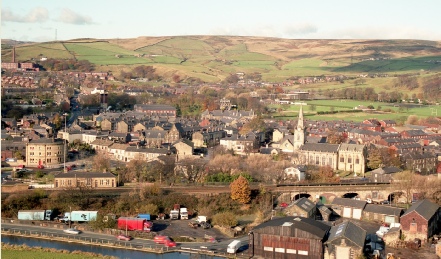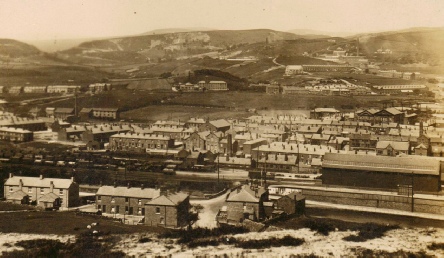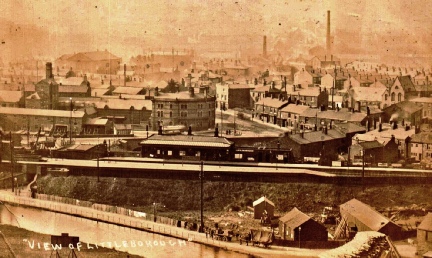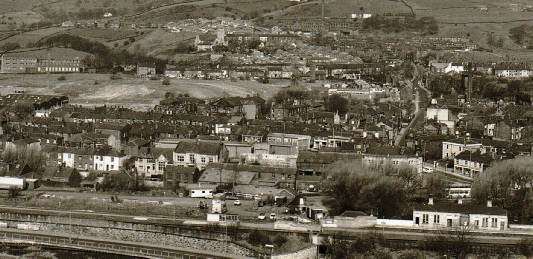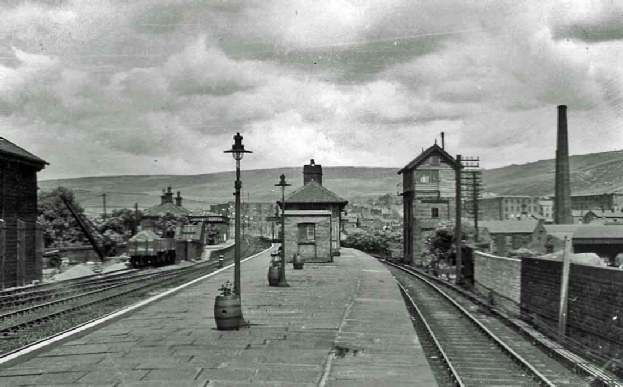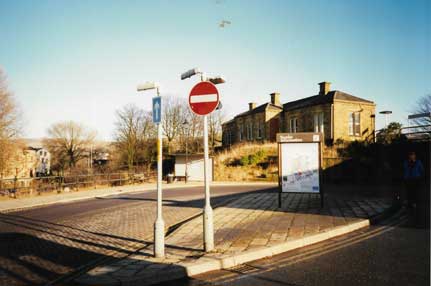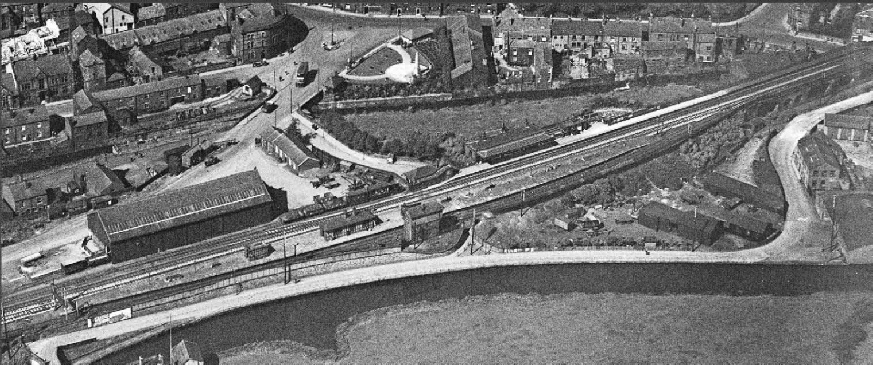Littleborough Station
The station area has undergone many changes over the years with replacement passenger facilities, revised goods yard and coal arrangements, signalling and level crossings for pedestrians. Now just two simple platform lines remain.
Littleborough Passenger Station
Located on a high embankment the passenger station, has undergone many changes over the years, not always in the best interest of travellers.
The earliest station may have had an overall roof and at some date, also had a ticket office under the viaduct with a stepped ramp access to the ‘to Leeds’ platform. By around 1850 the Leeds platform building had been replaced and was described as being 47 ft long with ticket offices and waiting rooms. In 1873/4 the existing building on the ‘to Leeds’ platform was constructed possibly incorporating parts of the earlier building and included a canopy as shown in the picture opposite top. The ticket office was reached by a ramped footpath directly off Railway Street, ie the old toll road provided by Mr Smith some 40 years earlier.
In 1892 a new ticket office was built adjacent the new subway with covered stair access to both platforms. On the Up ‘to Manchester’ platform a wooden prefabricated ladies cum general waiting room was provided together with separate gents toilet - see picture above right.
Over time numerous changes were made to the passenger facilities and currently both platforms have a large shelter with glass screen walls and leaky roofs. The to Leeds platform retains a heated waiting room, available mornings only.
Other changes affecting the station include a new bus turning-circle (pictured right), car park, access ramps and platform lengthening
The adoption of the then (2010) closed and shuttered main station buildings by the Littleborough Historical and Archaeological Society Ltd has transformed the apparently semi-derelict buildings into the History Centre.
Littleborough Coal Drops
There used to be 8 coal drops (for use by local coal merchants) located off Canal St but all trace s of them have now gone.
Littleborough Goods Yard
Goods facilities developed over the years with coal being one of the most important commodities. The 1851 OS map shows a large building on the goods yard site but few other details. However, in 1875 a replacement goods depot building was provided perhaps prompted to the growing number of mills in Littleborough. It was this building which required the footpath from the very opening of the railway to be diverted. The goods yard (illustrated top right) finally closed in 1963, the site being used subsequently for the Lo Cost Supermarket in 1992 (later the Co-op).
Signal boxes
What signalling was provided at opening and in the earlier days of operation is unclear but by 1891 there was a signal box just east of the viaduct together. At the station there was a loop or siding and another signal box at the west end of the goods yard. This situation possibly lasted some 30 years but by 1908 the box next to the viaduct had been replaced by a central signal box and 4 tracks had been provided between the Viaduct and Summit. The OS maps also show how the tracks provided at the station changed over time. The 3rd platform at Littleborough was taken out of use in 1969 and in October 1971 Littleborough Signal Box was closed with signalling was controlled from Preston Power Box.
Littleborough Viaduct to Summit Tunnel
Littleborough Station in 1926 (from left to right - 1875 Goods shed, to Manchester platform buildings, 1897 signal box, 1892 subway, 1870's station building on to Leeds Platform & railway viaduct

